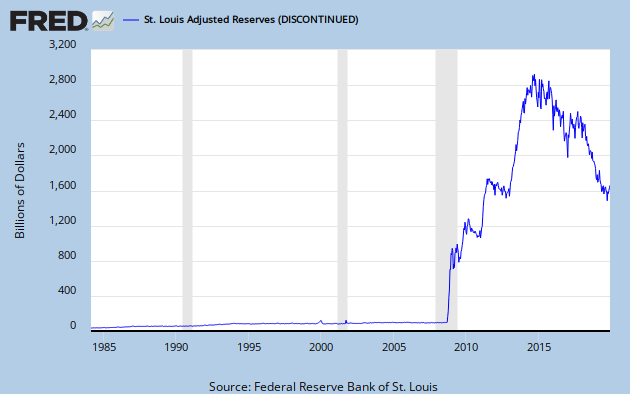Does paying interest on reserves stall growth?
In an interesting (pun intended) post (Economist’s View: Interest on Reserves and Inflation) Mark Thoma says that the Fed’s paying banks interest on their reserves does not dampen investment, for two reasons, one on the supply side and one on the demand side. On the supply side of the market for loans, Thoma points out that 0.25% (the rate the Fed is paying on reserves) isn’t that high. On the demand side, Thoma says that businesses have a lot of cash on hand that they’re not using to invest, meaning the demand for loans isn’t really there. I want to take issue with the second point, because while large corporations may indeed have a lot of cash on hand, small businesses and households don’t. And they are the ones who are being denied access to credit.
In an October report, the New York Fed found that many small businesses are being denied credit because of unrealistically stringent standards. An article in Newsweek suggest however, that standards are slowly being loosened for small business lending. On the household front, the National Association of Realtors (an admittedly interested [pun again intended] source), at their annual conference last week adopted a call on mortgage lenders to loosen their standards. While all this is not necessarily overwhelming evidence that banks are opting to collect interest on their reserves rather than making loans, I am nonetheless drawn back to charts like this one from the St. Louis Fed:

Banks are still sitting on a LOT of reserves that could be used to make loans.



 ShareThis
ShareThis
i am shocked that whoever is working on this block has no familiarly with endogenous money theory. please go back to nearly every post-keynesian’s work for the last three decades.
But I thought banks don’t use reserves to make loans?
Loans are made (or not made) based on whether or not anyone wants a loan, and then based on whether the bank finds the applicant to be sufficiently creditworthy. If the bank does not have enough reserves on hand, it borrows them on the inter-bank market. If there are not enough reserves in the inter-bank market, then the Fed provides them (at least as long as the Fed wants to keep its target interest rate).
This is very interesting. I shall first comment on one of the above comments. It is not really about the endogeinity of money. I think that this article is more concerned with the availability of credit and the cost of credit. The stringent rules should be relaxed especially to the investment by SMEs. The government should therefore come up with ways that make it possible for these type of investors to acquire capital more easily. Secondly, i believe that the government should come up with policy to lower and make commercial lending rates more competitive to increase demand for reserves that does not just originate from the banks themselves but instead in the market from borrowing by households and businesses.